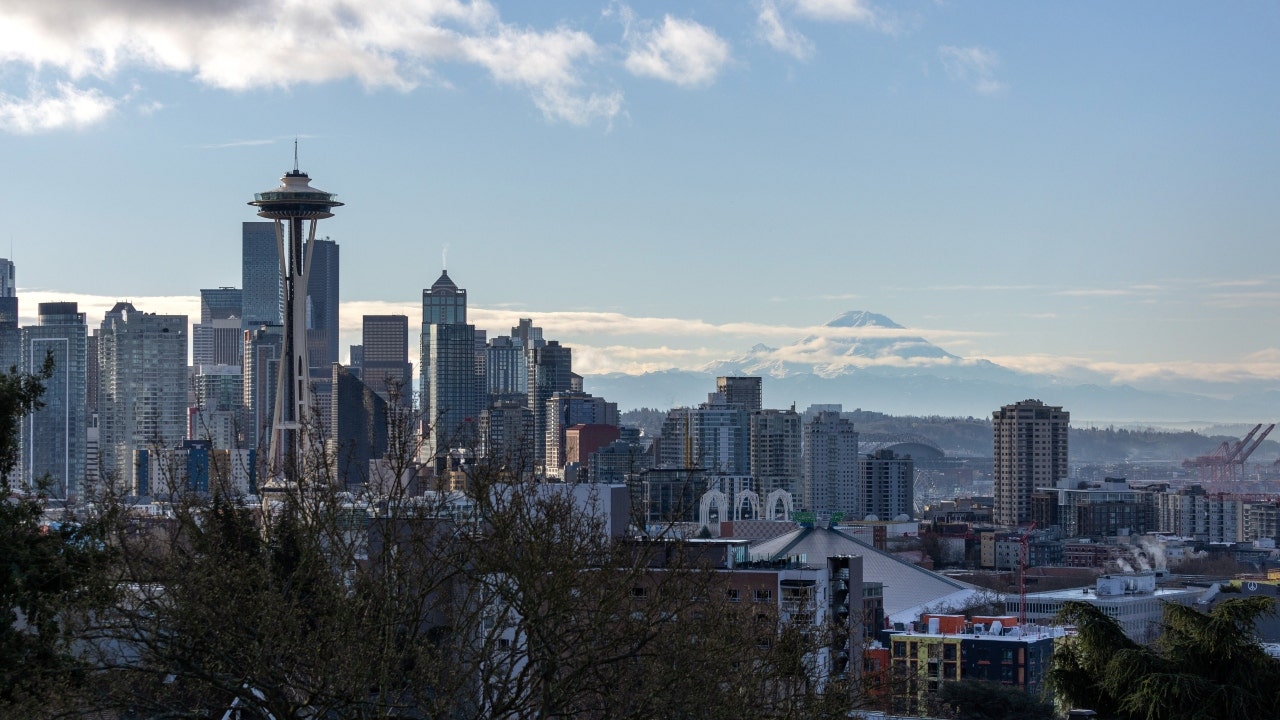Few places are as enjoyable as the headlands in Dana Point, where ocean waves lap rhythmically at the coastline and, on a clear day, the outline of Santa Catalina Island emerges from the Pacific Ocean, the silhouette of a bold sentry in the distance.
I walked the headlands trail last week, not only to soak up the beauty that has drawn so many of us to California, but also to get a glimpse of three houses perched on the edge of a cliff off Scenic Drive. A round of storms had sent rocks and dirt cascading down the cliff there, seemingly weakening the ground beneath those residences.
Increasingly severe winter storms have led to erosion, flooding and mudslides in many parts of the state as the soil has become saturated with water. Two weeks ago, heavy rain from an intense atmospheric river sent mud oozing through some hillside neighborhoods in Los Angeles, severely damaging homes and forcing evacuations.
Residents were anxious once again over the holiday weekend as another atmospheric river blew in from the Pacific. The storm system brought heavy rain on Monday to the southern part of the state, as well as severe thunderstorms and wind gusts to the Bay Area and warnings from forecasters about flooding, hail and possible tornadoes.
The Dana Point houses in Orange County drew particular attention after The Los Angeles Times and several TV stations obtained drone footage of their seemingly precarious situation. City officials and two Scenic Drive residents told me this week that the mansions remained structurally sound. “We’re absolutely fine,” one resident, Lewis Bruggeman, said through the speaker at the gate outside his home.
Still, the literal edge between beauty and peril on the coast seemed clear to people passing by. “Evidently, Mother Nature has kind of taken over on this one,” said Roger Parsons, 73, who was on a hike with his wife, Laurie.
The Parsons live a few miles away in Rancho Mission Viejo, a different hillside community in an unincorporated part of Orange County, with only a sliver of a view of the Pacific from the back of their house. The couple said they were just fine there, with less of a view but more confidence in the ground beneath them.
Two extreme winters have put Californians on notice. I spoke on Sunday with residents in Baldwin Hills, one of the Los Angeles neighborhoods that was hardest hit by a storm two weeks ago. Staci Broussard, 58, a retired city worker, said the storm did more damage to the neighborhood’s hillsides than she had ever seen in two decades of living there.
The slope behind her house crumbled, knocking down a portion of her backyard iron fence and sending mud and vegetation down the hill from her neighbor’s property, inundating much of her backyard. Since then, she said, she hasn’t been able to sleep well, as you might imagine.
As this week’s storm approached, Baldwin Hills residents did what they could to head off further disaster. They knew that the accumulation of rain this winter made them more vulnerable to any additional heavy downpours.
“Between us and the neighbor, we have tarped and staked down and put sandbags to have all that covered up,” Broussard said of the fragile hillside.
The danger does not end when the rain stops. Months after the storms last winter, a dozen houses on a hilltop in Rolling Hills Estates began collapsing into a canyon, and engineers later confirmed that the storms were to blame. Earlier this month, Los Angeles building inspectors placed red tags on 15 houses — meaning that they were uninhabitable — and restricted entry to 47 more because of storm damage.
Patrick Barnard, a research geologist who specializes in coastal hazards and climate impact for the United States Geological Survey, said several factors contributed to ground instability in California, including tectonic forces, weak rocks, poor urban drainage and rainfall.
Along the coast in particular, storms are potential drivers of cliff failures, because the rainfall can increase pore pressure, lubricate slip planes and add additional weight, Barnard said.
“We’ve built up to the extreme edge of what is a dynamic landscape,” he said.
And before you go, some good news
A new exhibition honoring the three-decade relationship between San Jose and Pune, India, a sister city, is on display at San Jose City Hall, The Mercury News reports.
The exhibition, which opened with a reception earlier this month, is called “Pune Through the Lens,” and includes 50 images of Pune that capture its culture and its residents, photographed by Manoj Musale, who is based there. The exhibit also includes a few additional pieces donated to San Jose by its sister city.
San Jose and Pune officially became sister cities in 1992, after a lengthy effort by a small group in San Jose to bring the two large tech-focused cities together. Since then, the partnership has yielded a handful of projects, like construction of a park near the Mutha River in Pune. The exhibition was first conceived around the 25th anniversary of the relationship in 2017, but the pandemic delayed its opening.
Thanks for reading. We’ll be back tomorrow.
P.S. Here’s today’s Mini Crossword.
Soumya Karlamangla, Maia Coleman and Briana Scalia contributed to California Today. You can reach the team at CAtoday@nytimes.com.
Sign up here to get this newsletter in your inbox.






